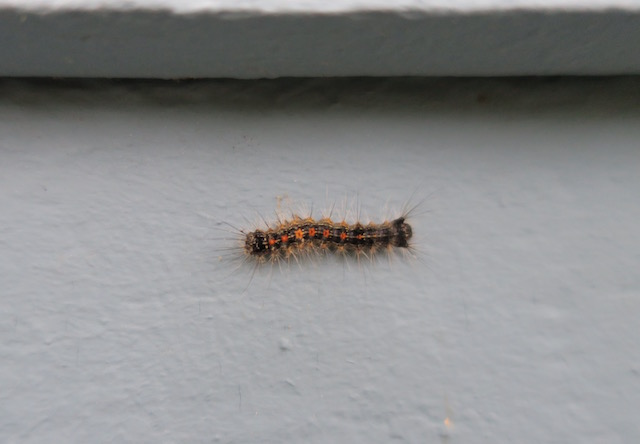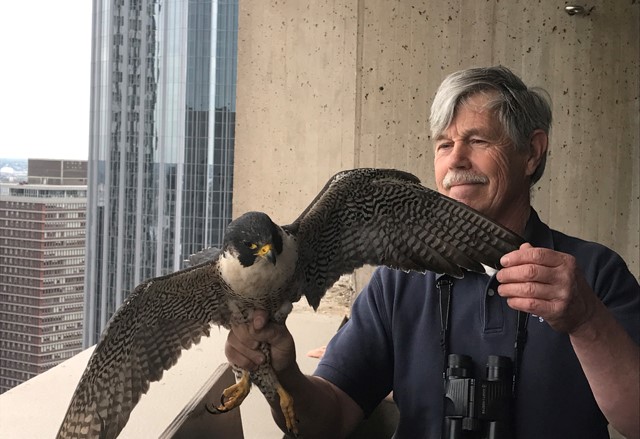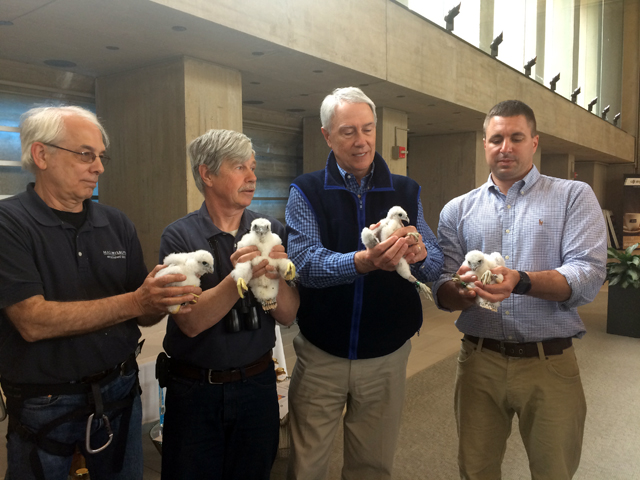If you’ve noticed a bunch small, fuzzy black caterpillars with a red stripe you’re not alone.
This invasive insect, which typically hatches in May, will spin long silken threads on which it travels up and down to find foliage. Once the caterpillars find a suitable tree (oak, birch, and apple trees are favorites), they begin eating the leaves, growing rapidly, and molting their skins to accommodate their increasing size.

The Problem
During a boom, or outbreak, gypsy moth caterpillars can cause massive defoliation most likely in uniform stands of tree species, particularly oaks.
While a disheartening sight, the long-term effect is not as disastrous as some commonly assume and may in some ways be beneficial. Thinning of forests by gypsy moths may produce a healthier, more diverse, and perhaps a more gypsy-moth resistant stand of trees. Moderate defoliation benefits forest wildlife by stimulating understory growth of shrubs and berry-producing thickets.
Plus, they are a food source for native birds such as cuckoos, downy woodpeckers, gray catbirds, and common grackles.
What You Can Do
That being said, there are efforts taken to minimize the damage.
- When the caterpillars are still small, contact a reputable pest management firm or arborist for advice.
- If spraying of pesticides is recommended, make sure the treatment uses B.t. kurtstaki (Bacillus thuringiensis kurtstaki), a bacterial pesticide that has proven effective in killing young caterpillars of a number of pest species.
What Not To Do
As tempting as it may be, do not use chemical pesticides. Although these substances do kill the larvae and thereby protect the foliage in the year of application, the insects are never totally eliminated. Also targeted by these pesticides are natural predators of the gypsy moth. And some chemical pesticides may actually prolong or exacerbate outbreaks.
And don’t bother gathering and destroying the caterpillars by hand. It’s a waste of time and effort. And many people experience allergic reactions.
Learn More
Find out more about the life stages of a gypsy moth caterpillar and management strategies >



